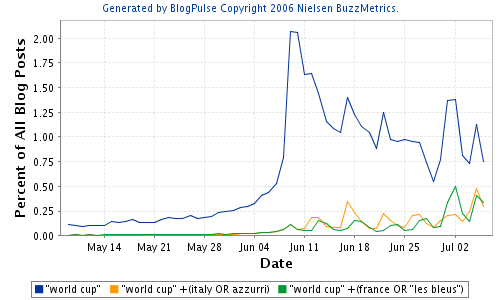Newswatch reports a powerful new study by the University of Ulster Centre for Media Research that confirms what many of us have long suspected about online news sources:
Through an examination of the content of major web news providers, our study confirms what many web surfers will already know – that when looking for reporting of international affairs online, we see the same few stories over and over again. We are being offered an illusion of information diversity and an apparently endless range of perspectives which in fact what is actually being offered is very limited information.
The appearance of diversity can be a powerful thing. Back in March, 2004, the McClatchy Washington Bureau (then Knight Ridder) put out a devastating piece revealing how the Iraqi National Congress (Ahmad Chalabi’s group) had fed dubious intelligence on Iraq’s WMDs not only to the Bush administration (as we all know), but to dozens of news agencies. The effect was a swarm of seemingly independent yet mutually corroborating reportage, edging American public opinion toward war.
A June 26, 2002, letter from the Iraqi National Congress to the Senate Appropriations Committee listed 108 articles based on information provided by the INC’s Information Collection Program, a U.S.-funded effort to collect intelligence in Iraq.
The assertions in the articles reinforced President Bush’s claims that Saddam Hussein should be ousted because he was in league with Osama bin Laden, was developing nuclear weapons and was hiding biological and chemical weapons.
Feeding the information to the news media, as well as to selected administration officials and members of Congress, helped foster an impression that there were multiple sources of intelligence on Iraq’s illicit weapons programs and links to bin Laden.
In fact, many of the allegations came from the same half-dozen defectors, weren’t confirmed by other intelligence and were hotly disputed by intelligence professionals at the CIA, the Defense Department and the State Department.
Nevertheless, U.S. officials and others who supported a pre-emptive invasion quoted the allegations in statements and interviews without running afoul of restrictions on classified information or doubts about the defectors’ reliability.
Other Iraqi groups made similar allegations about Iraq’s links to terrorism and hidden weapons that also found their way into official administration statements and into news reports, including several by Knight Ridder.
The repackaging of information goes into overdrive with the internet, and everyone, from the lone blogger to the mega news conglomerate, plays a part. Moreover, it’s in the interest of the aggregators and portals like Google and MSN to emphasize cosmetic or brand differences, so as to bolster their claims as indispensible filters for a tidal wave of news. So whether it’s Bush-Cheney-Chalabi’s WMDs or Google News’s “4,500 news sources updated continuously,” we need to maintain a skeptical eye.
***Related: myths of diversity in book publishing and large-scale digitization efforts.


 But this presumably opens the door to some Katrina-related Pulitzers this April. I would put my bets on
But this presumably opens the door to some Katrina-related Pulitzers this April. I would put my bets on 